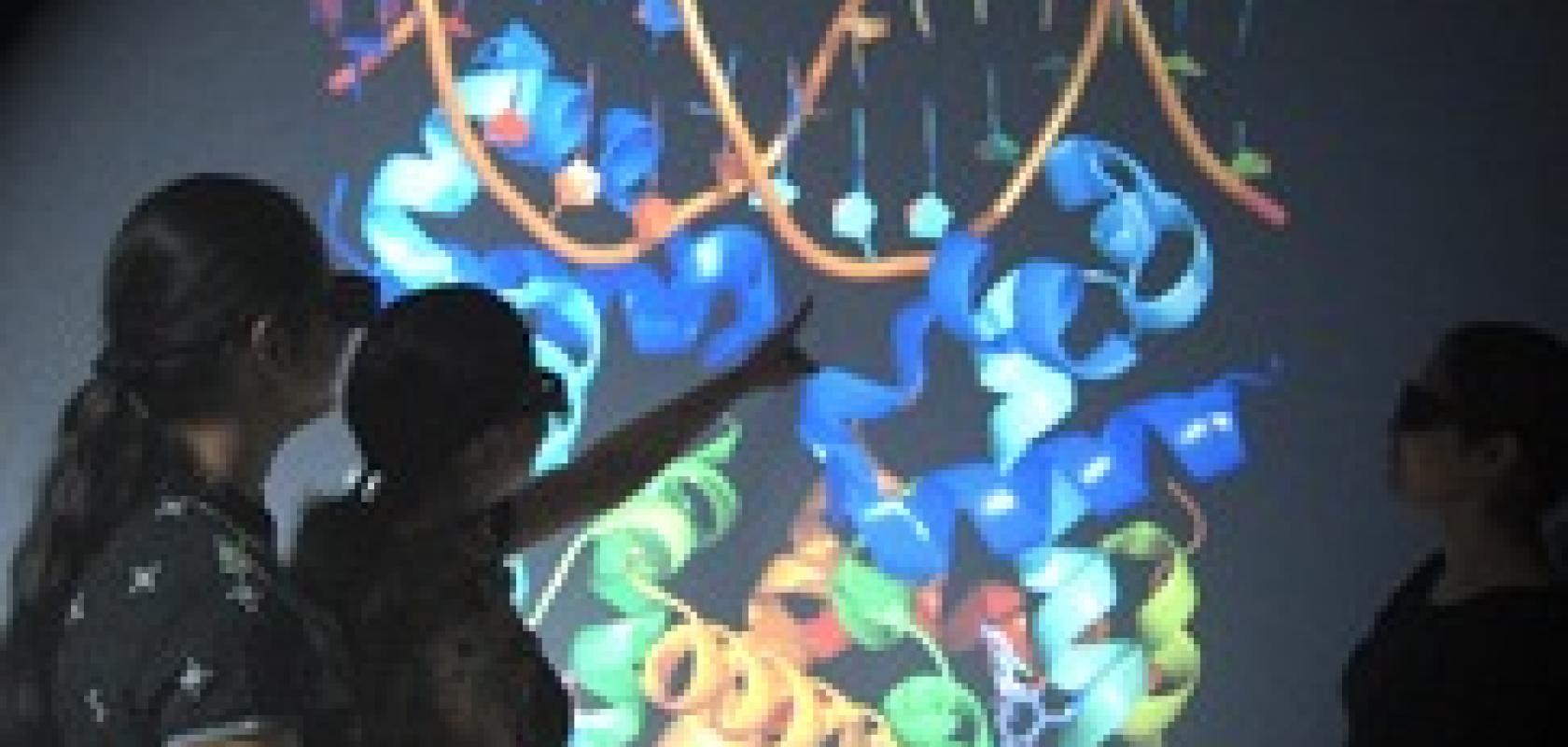IMTECH, an India-based microbiology research and technology centre, has installed a Virtalis ActiveWall Virtual Reality (VR) system as well as Virtalis’ own VR software enabler for PyMOL, which allows molecular data to be visualised and interacted with in stereoscopic 3D. The centre is currently using its ActiveWall with VR-enabled PyMOL to visualise biological macromolecules (especially proteins) in 3D in order to study the interaction of these molecules with one another and with other biological moieties. The system is also deployed in a teaching course on protein structures, as it helps students to visualise macromolecular interactions, such as, protein-DNA interaction, in specific contexts like multiple-drug resistance.
Srikrishna Subramanian, principal scientist at IMTECH, explained: ‘When the ActiveWall and the VR Enabler for PyMOL were installed, their application as a high-end visualisation platform for macromolecular biodata was clear. Once the integrated system was up and running, people were awe-struck by the stunning visual impact of being able to look at their structural data on a large screen where they could interact with it in real time.
‘The utility of this system is such that researchers can use it to interactively visualise biological macromolecules at an atomic level, allowing detailed structural analysis. In addition to serving as an exceptional research environment, our ActiveWall can be used as a teaching tool to highlight the importance of macromolecules to students and research collaborators from other related research areas.’
ActiveWall draws on active stereo technology and features a custom screen, specialist computer, Virtalis custom software and powerful projectors. Movements within the ActiveWall environment are tracked using a tracking system. This added functionality alters the perspective of the visuals according to the user’s position and orientation within the scene to give a natural and accurate sense of relationship and scale. The hand-held controller allows the immersive experience to be enhanced further and the user can navigate through the virtual world and pick and manipulate molecules in real time.
‘ActiveWall makes group discussions more interactive, because the minute details of a particular protein or macromolecule are much clearer in 3D on a large screen,’ added Subramanian. ‘We now have a better appreciation of how a protein’s function is modulated by atomic level interactions and the audience can see these macromolecules in rich interactive detail. The hand tracking system gives power to modulate a structure as and when needed during the course of a discussion and to visualise from multiple viewpoints. Overall, the Virtalis ActiveWall fosters an atmosphere of active discussion and participation for all.’


